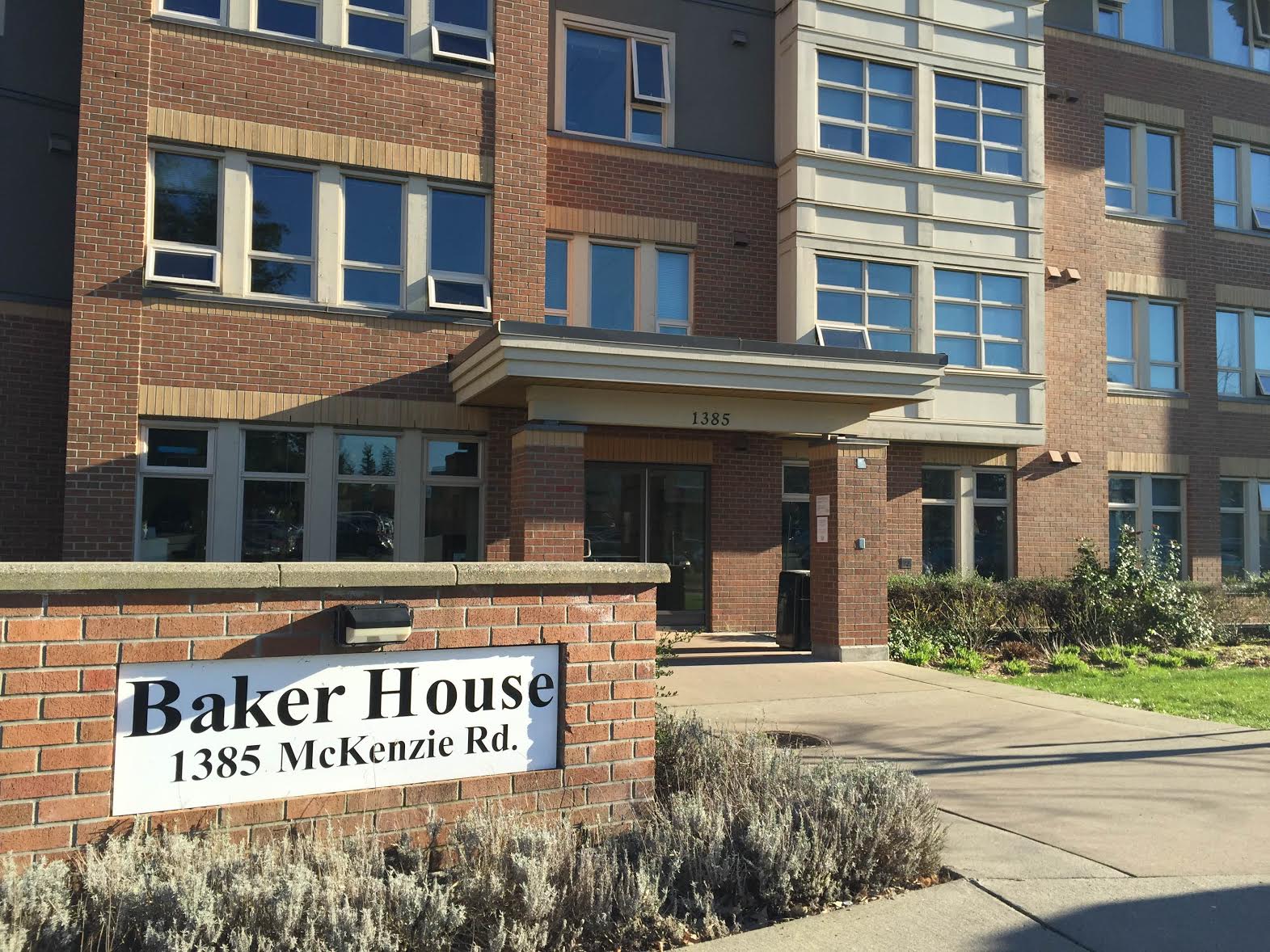By Ashley Mussbacher (The Cascade) – Email
Print Edition: February 25, 2015

If you don’t live in residence, Baker House can seem mysterious.
Located on the Abbotsford campus above the UFV bookstore and the Press Café, the 200-occupancy apartment-style building is outfitted with a common room, laundry, and underground parking, all maintained by students and staff twenty-four seven.
From the outside, however, it’s hard to get a clear picture of what it’s like to live in Baker House, and the issues residents might encounter.
Food services lacking, in-room cable cut
One of these is an issue many students have on campus: food. The cafeteria and AfterMath are closed later in the evenings and on the weekend, so students living in residence need to find a way to the nearest grocery store. Other services like clinics and shopping centres lie beyond a kilometre of the university.
Resident fees include basic utilities like electricity, heat, telephone, and high-speed internet. They used to include cable, but over the summer the cable contract was removed. Instead the internet speed was upgraded. Director of student life and development Kyle Baillie says the decision was based on a usage assessment, as they found only 30 per cent of students used it sporadically.
“We were able to exchange it for an increased speed internet contract. We went from 10MB per second to over 25MB per second.
“There was no increase to students for that charge. The $300 increase was just inflationary room cost, [which] brought us from $602.00 per month to $618.00 per month,” he explains.
Jesus Araujo has lived in Baker House since the summer, and notes the cable cut was unfortunate.
“We had to push a lot so we could [at least] get cable in the common rooms,” he says, noting students who want cable have to pay extra.
International residents need support
Baillie says support for international students is another issue that arises in residence.
“Our international population on campus is growing, so one of the things we’re looking at right now is how to support that,” he explains.
Zapisocki says one way this is happening is through student-based inititatives; a practicum student who is interested in working with international students, for example, has begun a new peer support group which may help break barriers between domestic students and those coming from other places.
Part of the need for support, Zapisocki adds, comes from students’ difficulties adapting to a new place alone.
“A lot of our Chinese students find it difficult to do the transition from China to Canada, and sometimes they move out because of that isolation. So we’re trying to address that,” she says.
Mike Xiong, Bill Lin, and Will Zu, all residents who have recently come to UFV from China, say they enjoy Baker House, especially basketball games and other activities hosted by the residence.
Lin says the proximity to campus makes Baker House an ideal living situation. “I love it. I can sleep in, because I can just walk to class. It’s convenient,” he says.
Community engagement
Baker House, however, hopes to provide more than just proximity; the goal is to foster a diverse community among all its residence as well as connecting with the campus at large.
Manager of housing Christine Zapisocki says the Baker House community is structured and strengthened through programming put on by students in the role of resident assistants (RA). She explains that often Baker House events are also organized in conjunction with other UFV groups.
“We like to do that collaboratively with clubs and departments on campus so that not only are we providing enhanced programming for our students living in Baker House, we’re also including the rest of the community,” Zapisocki says.
A programming fee of $75 is included in the total semester fee of $2,989, which goes toward the programming they do.
“Either you become a total outcast or you become totally outgoing.” – Jesus Araujo
“For example, [if] we are partnering with other clubs and organizations on campus to go on a snowshoeing event, and five dollars of the cost of snowshoeing is coming out of the programming fees,” she says.
Students in Baker House, of course, come from varied disciplines and departments. Baillie says Baker House tries to offer a similar variety to the activities offered.
“We try to create programming that reaches every corner and every unique population in the building,” he says, adding that events run with anywhere from 10 to 50 student participants.
First-year business student Lawrence Lobo notes that some activities include athletic meets, hiking, and even “make-your-own-smoothie” events in the communal kitchen, where residence staff lay out fruits and vegetables for students. The reasons he likes living in residence are about that social aspect.
“You can always go to the common room to chill out and study with other people. The RAs are really helpful if you need to know anything about the activities on- or off-campus,” he says.
However, Araujo explains that while there are many events planned by RAs, there is still a large population of students who don’t attend them.
“It’s two extremes living here: either you become a total outcast or you become totally outgoing,” he says, and suggests that residents should be looking for a sense of community. “If you’re the kind of person who is a little insecure and will just stay in the room and you don’t like to live with someone, then it’s not the place for you.”
Baillie says Baker House is not supposed to be a place where students simply live; there is a greater social atmosphere.
“It’s not somewhere where we expect people to just go, and hole up [in their rooms] after classes. It’s a community, and as a result the people who live there we ask them to engage, participate, to come out of their rooms and be part of something bigger.”


